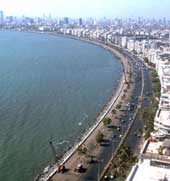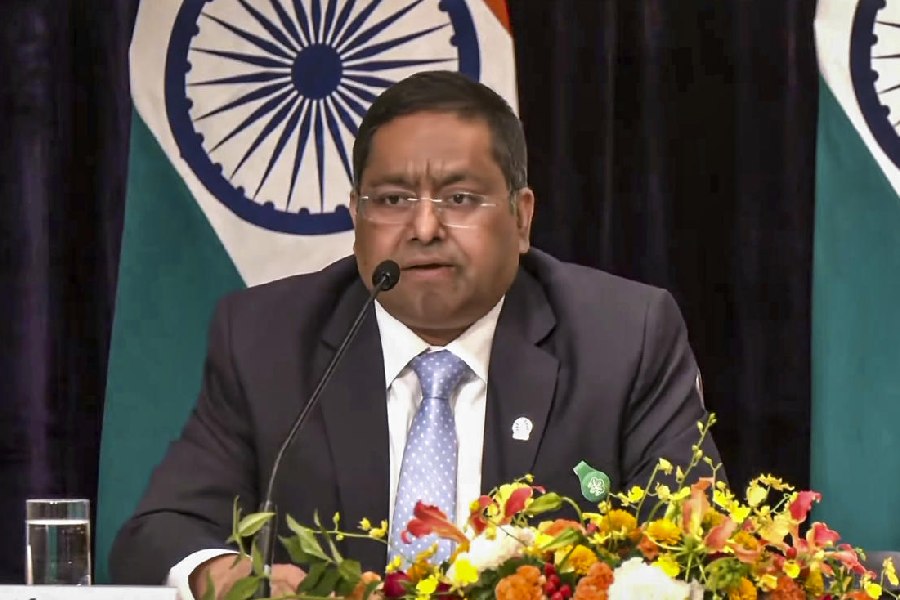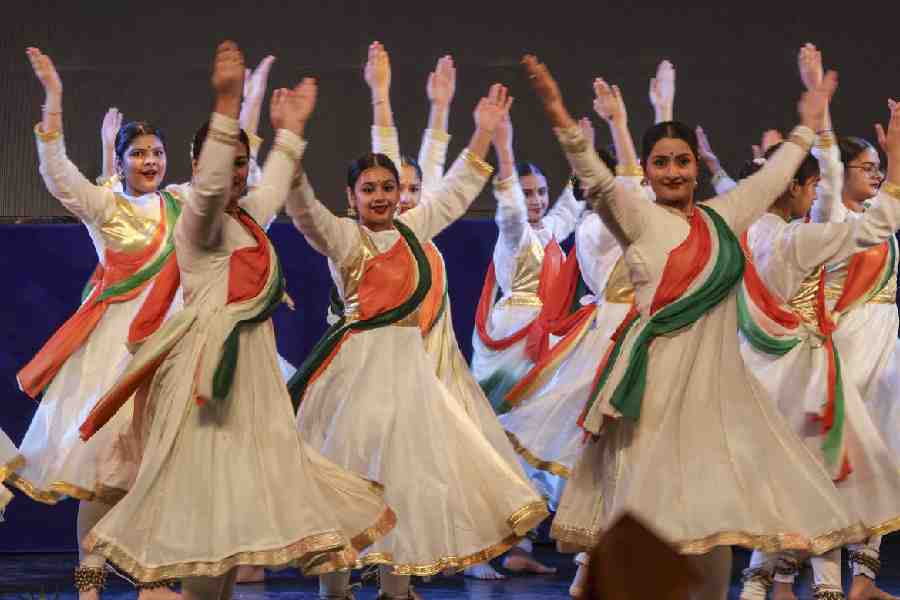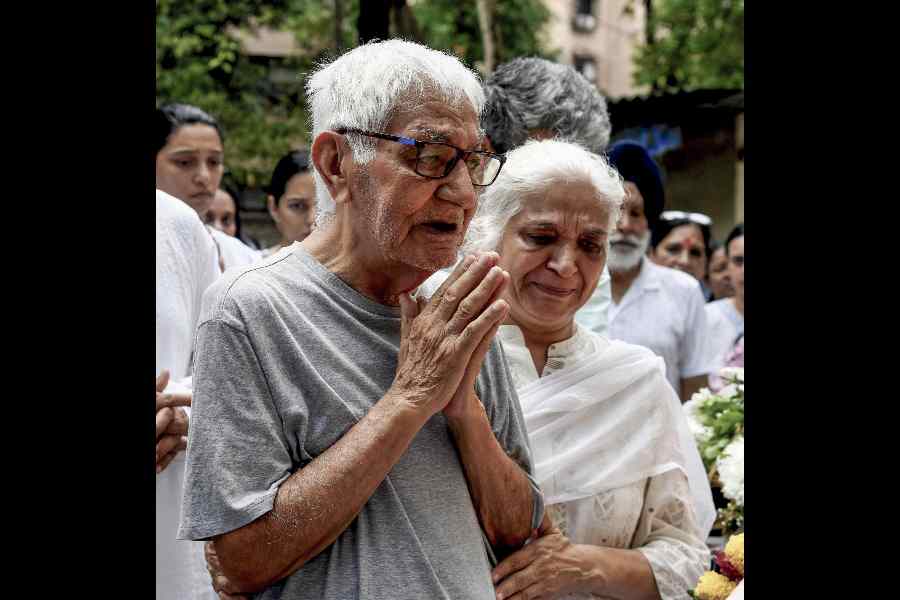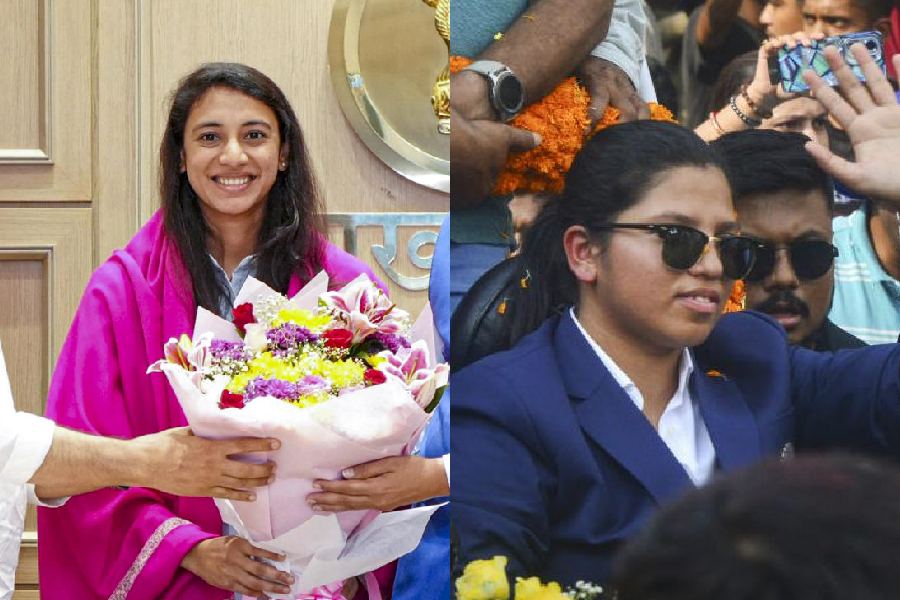 |
 |
 |
 |
| (From top): A picture from Angelin’s portfolio; Alice in her room; lines scribbled by Alice; Roma and Gaurav. Pictures by Bishwarup Dutta |
The three-storey house at 1 Brindaban Mullick Lane, in Howrah, is not an inviting place. Locked and dark, it looks abandoned. There is no paint on the walls — instead the building seems coated with years of dust and neglect. The only inhabitants since last week, when the family that lived here left, are a few cats, which were left trapped and hungry.
Inside there’s hardly any furniture. This is the house where on July 6, Angelin Laha, a 21-year-old aspiring model, committed suicide. She was unable to cope with a career not going anywhere and what seems to be a complicated, unhappy personal life. Her mother Roma, 42, left for New Delhi on Wednesday with her son Gaurav, a student of Class IX.
Angelin’s elder sister Alice, 22, an aspiring DJ, is untraceable. She has scribbled her death wishes on the walls, a mix of her own thoughts, Wolverine’s from X-Men and Pink Floyd’s: “Suicide is God’s gift in Hell…. It’s ironic that the secret to life is found in death… I have become comfortably numb…” Crouching in a corner in her disorderly room, a few hours after her sister’s death, Alice said: “I am going to commit suicide soon too. I can no longer bear such poverty.”
The house smells of despair and death. And is strewn with broken dreams. Fuelled by what is becoming one of the powerful killers in the country: lifestyle aspirations.
Driven by lifestyle
The irony of Angelin’s and Alice’s dreams couldn’t be brought out sharper than by the contrast between their pictures — mostly of Angelin, shot in soft-focus, in black tank tops, or shocking pink bustiers, or high boots, coloured hair flying, or looking “ethnic” — and the walls they adorn. They are bare, the paint peeling off. The rooms are bare, too. To sustain the girls’ dreams, which was also their mother’s, the furniture had to be sold off.
The girls were not born Alice and Angelin. They were named Annapurna and Kamala, after the goddesses, by their father, the late Prabuddha Laha. An advocate and a former Congress MLA from Asansol, he introduced his family to the good life: five-star evenings, clothes, gizmos. After his death in 2004, his wife took over. She would make Alice a DJ and Angelin a model.
But things spun out of control. The little money Prabuddha had left ran out. The girls, who had got used to designer clothes and even drugs, according to Roma, began to demand more money. The day after Angelin’s death, Roma spoke about her daughter. “I discovered an SMS sent by Angelin to a Goan, placing an order for marijuana and Ecstasy.” She also claimed that Angelin would often visit places high on drugs. “Once she went to the British Council Library and fell ill. The staff called me.”
Roma adds that Alice had allegedly visited a private clinic in Ballygunge with an offer to sell her eggs. Alice could not finish her DJ course while Angelin found it tough to find assignments. “The modelling industry needs women to compromise themselves. My daughter wouldn’t do that,” says Roma.
On July 6 morning, Angelin went to the market to buy fish for the cats. She came back and hung herself.
Seduction of glamour
Angelin’s story doesn’t end there. The glamour industry is no longer the preserve of the urban cool. The seduction of this world cuts across city and small town; the English-speaking and the Vernie; the affluent, the middle-class and the not-so-well-off; the mother and the daughter. Every modelling agency and media house is flooded with portfolios of young wannabe models, brought by hand sometimes by the mother, and even the father. If modelling didn’t work, Angelin had once planned to be an airhostess. The world of glamour has lost its stigma in many homes.
Fashion show event managers say they are flooded with applications from outside the city. “We were surprised at the number of applications from Birati, Barasat, Madhyamgram and Khardah,” says Kamalendu Dasgupta of Images of India, an event management company.
Srabani Roy, 21, who has been modelling for about five years, says: “I used to stay in Khardah. When I travelled in trains even the women in the ladies’ compartment would taunt me for wearing the clothes I did. I used to drape a dupatta around myself. I also carried my clothes with me and changed in the loo.”
From a childhood spent with a school teacher father, strict about her allowance, she has come a long way. “I love drinking whisky and Glenfiddich is my favourite brand. But my tastes keep changing. If I stick to one brand for too long it seems as if I can’t get high. I also like designer watches.”
Shutanuka Haldar is from Joynagar in South 24-Parganas. She works as a front office executive at a Tata Indicom showroom in Chowringhee. But she wants to be a model. She has already done a few small shows but she is waiting for her big break. “I have the looks. I have always been very conscious about my figure. And these are the things that you require to be a model,” she says. “Every day when I return home by train I am a face lost in the crowd. But I know one day they will all recognise me,” says the Women’s Polytechnic Institute graduate.
When Shutanuka decided to try her luck in modelling she did not face much resistance from her family. Her father Jaladhar Haldar, a jeweller in Joynagar, says: “We have to move with the times. If she thinks she can get success in modelling, who am I to stop her?”
Bula Bhadra, the head of the sociology department at Calcutta University, says: “It is natural for young people to be attracted to the audio-visual media. The body has become commodified and is ‘good business’. Young people have begun to forego traditional careers, which take longer to build and might require more use of the intellect.”
The stigma attached to this world is gone, she says, because “women’s bodies are shown or used in almost every advertisement and society has become desensitised to it. The use of the female body has begun to symbolise modernity.”
Parental pressure
Parents are encouraging their children into it like never before. Neha Kapoor, who wants her 16-year-old daughter Supriya to step into modelling, says: “Modelling can bring instant recognition. It can be a stepping stone to films or television.” Ruman Banerjee, who sells saris, wants her daughter Tumpa, 17, to walk the ramp. “My daughter needs to be self-sufficient. She has not passed her Class X exams, but for modelling, she does not require formal qualification,” she says. Madhumita Maitra, director of an architectural and interior decoration company, does not mind her 16-year-old daughter Rukmini venturing into modelling.
“Some parents ask me not to put too much pressure on their child. They openly say that they just want their daughter to pass the boards and take up modelling afterwards,” says Dipankar Basu, who teaches at St Xavier’s Collegiate School.
Not only girls. Men are being lured as much.
Baranagar resident Sarbani Lahiri, an insurance advisor at the State Bank of India, has encouraged her son Bhargav, a final-year student at Surendranath College, to dabble in singing and music. Abhrajeet Dutta, 28, from Uttarpara, who has a bachelor’s degree in homoeopathy, has decided to follow his “dream” and become a model and actor.
Dreams die hard. Even when they were apparently starving, Angelin’s sister Alice had spent Rs 3,000 on the treatment of one of the cats, which are now forgotten. And even as she seemed distraught, Roma, Angelin’s mother, solicited advice from reporters on a potential career in modelling for her son.

